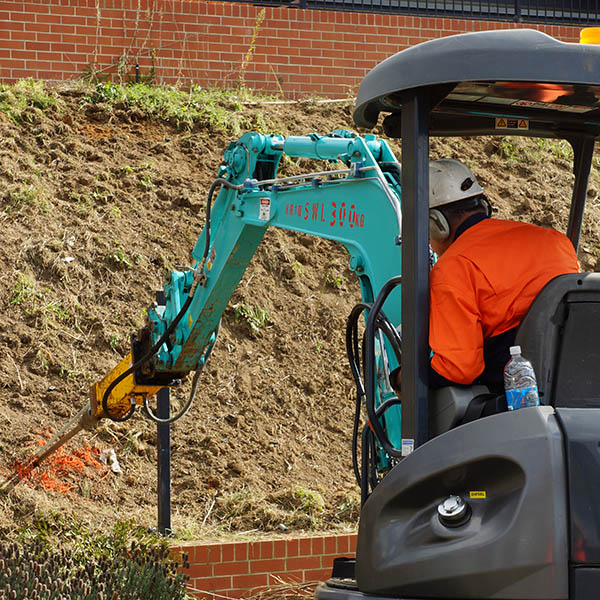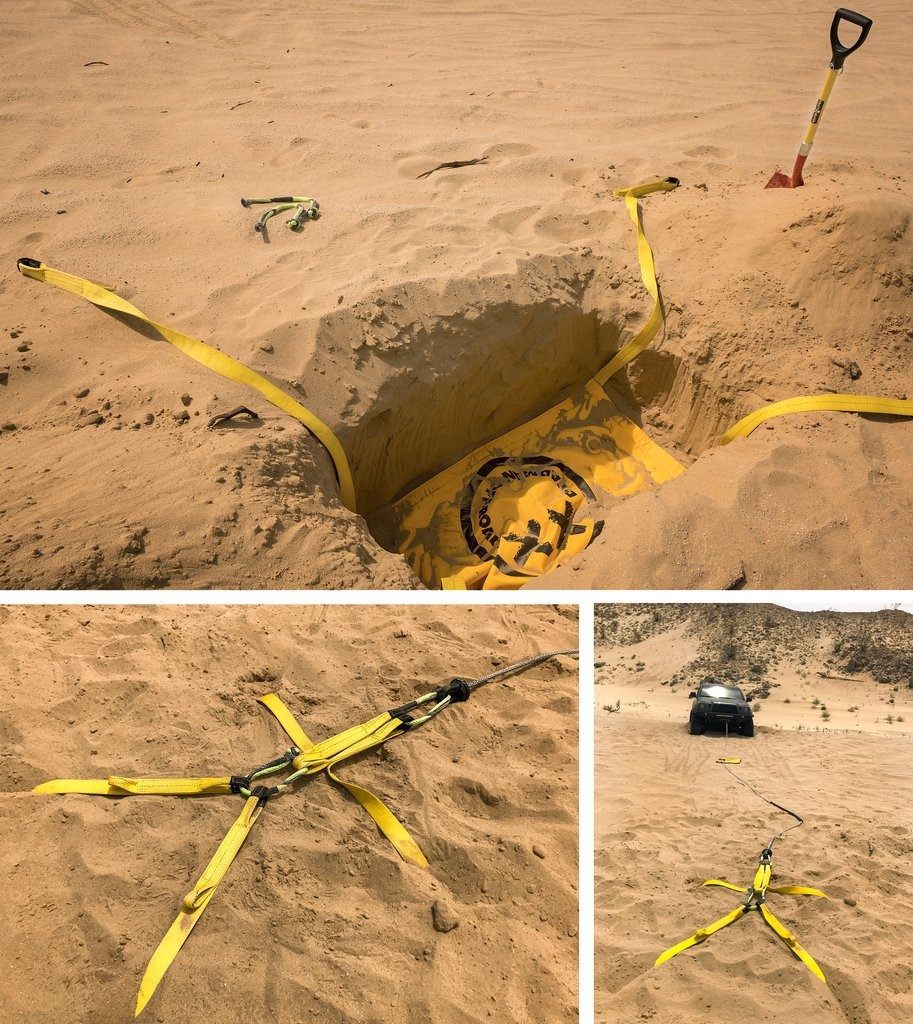How Heavy-Duty Earth Anchors Work: A Comprehensive Guide to Soil Anchoring Solutions
Heavy-duty Earth supports play an essential role in providing security and assistance in numerous building and construction applications. By embedding deeply right into the ground, they resist vertical and side forces successfully. Various kinds of anchors satisfy different dirt conditions, making them flexible. Understanding their technicians and setup strategies is necessary for taking full advantage of efficiency. What aspects affect their efficiency, and just how do they contrast to typical methods? The answers may amaze you.
Comprehending Heavy-Duty Earth Anchors
Durable Earth anchors serve as necessary parts in different building and construction and landscape design projects, providing security and assistance in challenging soil conditions. These anchors operate by being installed into the ground, where they stand up to vertical and side pressures. Their style permits safe and secure attachment to structures, guaranteeing they stay secured versus dirt motion or external loads.The efficiency of durable Earth supports largely depends upon the sort of dirt and the support's installation deepness. Proper installment techniques are vital, as they determine the support's holding ability. Ecological factors, such as moisture and freeze-thaw cycles, can likewise influence performance.These anchors are regularly used in applications varying from protecting fences and maintaining wall surfaces to supporting short-term structures throughout damaging climate condition. Recognizing the concepts behind durable Earth anchors is essential for specialists looking for to improve the sturdiness and security of their jobs.
Kinds Of Heavy-Duty Earth Anchors
Different types of durable Earth supports are designed to meet details needs based upon soil conditions and task needs. Helical supports, featuring screw-like blades, are reliable in softer dirts, using high load capacities and simple installment. Driven anchors, which are inculcated the ground, appropriate for rough terrains and provide instant lots assistance. Tie-back anchors are commonly used in retaining wall surface applications, enabling for side support by anchoring into the ground at an angle. One more kind is the cast-in-place anchor, perfect for concrete applications, as they are integrated right into foundations for boosted security. Ultimately, soil screw supports are flexible alternatives that can be utilized in numerous dirt kinds, providing reliable tension and compression capabilities. Each type serves distinctive applications, making sure stability and safety in building and landscaping jobs. Recognizing these choices allows for educated choices in choosing the appropriate Earth securing remedy.
The Mechanics of Dirt Anchoring

Comprehending the technicians of soil anchoring calls for an exam of different sorts of Earth anchors and their setup techniques. Each anchor type offers special features that affect its effectiveness in different soil problems. Correct setup techniques are crucial for optimizing the securing system's stability and performance.
Sorts Of Earth Anchors
Earth supports, necessary parts in soil anchoring systems, come in numerous types, each designed for particular applications and dirt conditions. One of the most typical types consist of screw anchors, which are turned into the ground, supplying strong lateral resistance. Helical anchors feature blades that permit efficient installment in numerous soil types, making them suitable for both irreversible and momentary applications. Driven supports, normally made from steel, are hammered right into the soil and work in dense or rough settings. Auger anchors utilize a helical layout to assist in installment in softer soils. Plate supports are composed of a flat plate hidden horizontally, dispersing lots over a bigger area, suitable for applications needing high lots abilities in natural dirts.
Installation Techniques Discussed
Proper setup methods are crucial for the effectiveness of soil anchoring systems. The procedure typically starts with website assessment, verifying the chosen area can support the support's load. After identifying the proper anchor kind, proper hole depth and angle need to be established. The installation involves driving the anchor right into the ground using specific devices, such as manual or hydraulic vehicle drivers, to achieve best embedment. Post-installation, tensioning the anchor is crucial to assure security; this is frequently verified with tons screening. Additionally, surrounding soil problems need to be checked to protect against displacement. Adhering to these methods not just improves the anchor's efficiency however additionally prolongs its life expectancy, giving trusted assistance for different applications.
Applications of Heavy-Duty Earth Anchors
While sturdy Earth supports are commonly connected with building and landscaping, their versatility extends to a variety of applications across various industries. In civil design, they provide crucial support for maintaining walls, ensuring security in locations vulnerable to soil disintegration. The aquatic field utilizes these anchors for safeguarding docks and marinas, protecting against activity triggered by currents and tides. Furthermore, in the telecom industry, heavy-duty Earth supports are significant for her comment is here stabilizing cell towers and other tall structures against wind pressures. Agricultural applications also profit, as these supports can protect frameworks like greenhouses and livestock fence, ensuring they endure severe climate condition. In sustainable energy tasks, such as wind ranches, Earth supports play an essential duty in securing wind turbine structures, enhancing general safety and performance. This broad variety of applications highlights the flexibility and reliability of heavy-duty Earth supports across various areas.
Benefits Over Conventional Anchoring Approaches
Although standard anchoring approaches have actually long been counted upon for security, durable Earth supports supply substantial advantages that boost efficiency and performance. One major advantage is their premium load-bearing capability, which allows them to hold up against greater pressures without failing. This stamina makes them optimal for requiring applications, such as in building and construction and energy installations.Additionally, durable Earth supports are designed for much deeper setup, offering higher stability in numerous soil conditions, consisting of loose or sandy soils. Their resistance to rust and ecological elements assures a much longer life-span and reduced maintenance expenses compared to conventional methods.Moreover, these anchors can be mounted with very little disruption to the surrounding area, protecting the integrity of the landscape. Overall, sturdy Earth anchors provide a effective and reputable remedy for anchoring needs, surpassing the restrictions frequently linked with standard anchoring techniques.
Installment Process and Finest Practices
The setup process for soil anchoring services begins with detailed preparation and site assessment to ensure peak efficiency. Following this, a step-by-step setup guide supplies clear guidelines for reliable execution (Manta Ray anchors). Following these ideal practices is necessary for achieving long-lasting and dependable anchoring results
Prep Work and Website Analysis
Reliable preparation and comprehensive website examination are important actions in the installment of soil anchoring services. Before installment, the soil type need to be examined to determine its bearing capacity and viability for securing. Performing a geotechnical study can give important info regarding dirt make-up, moisture degrees, and potential ground motion. Furthermore, identifying existing frameworks, plants, and energies is important to prevent disturbance throughout installment. The area should be removed of particles and obstacles to assure secure accessibility for equipment. Weather conditions ought to additionally be kept track of, as unfavorable conditions can affect both safety and installment effectiveness. By meticulously preparing the website and examining all relevant variables, the likelihood of successful anchor efficiency is significantly enhanced.
Step-by-Step Setup Overview
An extensive installment procedure is essential for attaining excellent performance of soil securing services. The setup starts with picking the suitable anchor type and ensuring the website is free from debris. Next, appropriate hole positioning is determined based on tons demands. Once the place is established, openings are drilled to the specified depth and diameter using the appropriate devices. The support is then placed right into the hole, ensuring it is aligned appropriately. After protecting the support, dirt is backfilled and compacted to improve stability. It is crucial to adhere to maker guidelines throughout the procedure. A post-installation examination verifies that the anchors are appropriately located and operating as planned, offering reliable support for the desired application.

Upkeep and Assessment of Earth Anchors
Routine upkeep and evaluation of Earth anchors are essential for ensuring long-lasting efficiency and stability. Regular checks permit the early detection of issues such as deterioration, loosening, or dirt activity. Inspectors ought to try to find signs of rust or deterioration on the support components, specifically at the link points. In addition, the bordering dirt you can look here should be evaluated for erosion or adjustments in moisture material, which can impact anchor effectiveness.It is advisable to develop a regular assessment timetable, preferably a minimum of yearly, depending on ecological problems. During examinations, all visible elements need to be cleaned to get rid of dust or debris that might hide potential troubles. Any kind of indications of distress, such as tilting frameworks or unusual settling, should trigger instant evaluation. Proper documents of assessments can help in monitoring anchor performance in time and promote timely maintenance activities, ensuring the anchors continue to be trustworthy and functional.
Often Asked Inquiries
What Materials Are Heavy-Duty Earth Anchors Typically Made From?
Heavy-duty Earth supports are generally created from sturdy materials such as galvanized steel or stainless-steel, making sure toughness and resistance to corrosion. These materials give long-lasting support and security in numerous dirt conditions and applications.
How Do Soil Problems Impact Support Efficiency?
Dirt problems considerably affect anchor efficiency. Variables such as dirt type, dampness web content, and compaction influence the anchor's grasp and stability, with natural dirts frequently providing much better resistance than loosened or sandy soils, affecting overall effectiveness.
Can Heavy-Duty Earth Anchors Be Reused After Removal?
Heavy-duty Earth supports can be reused after removal, offered they are checked for damages and wear. Proper cleansing and upkeep enhance their long life, ensuring reliable efficiency in succeeding installations when conditions permit secure reinstallation.
What Are the Ecological Influences of Using Earth Anchors?
The environmental impacts of utilizing Earth anchors consist of potential dirt disruption, disturbance of regional ecological communities, and possible contamination of groundwater. Nevertheless, if utilized properly, their benefits frequently exceed these issues, promoting security in numerous applications.
Exactly how Do I Choose the Right Anchor for My Project?

Comments on “15 Crucial Facts You Didn’t Know About tensile load anchors”